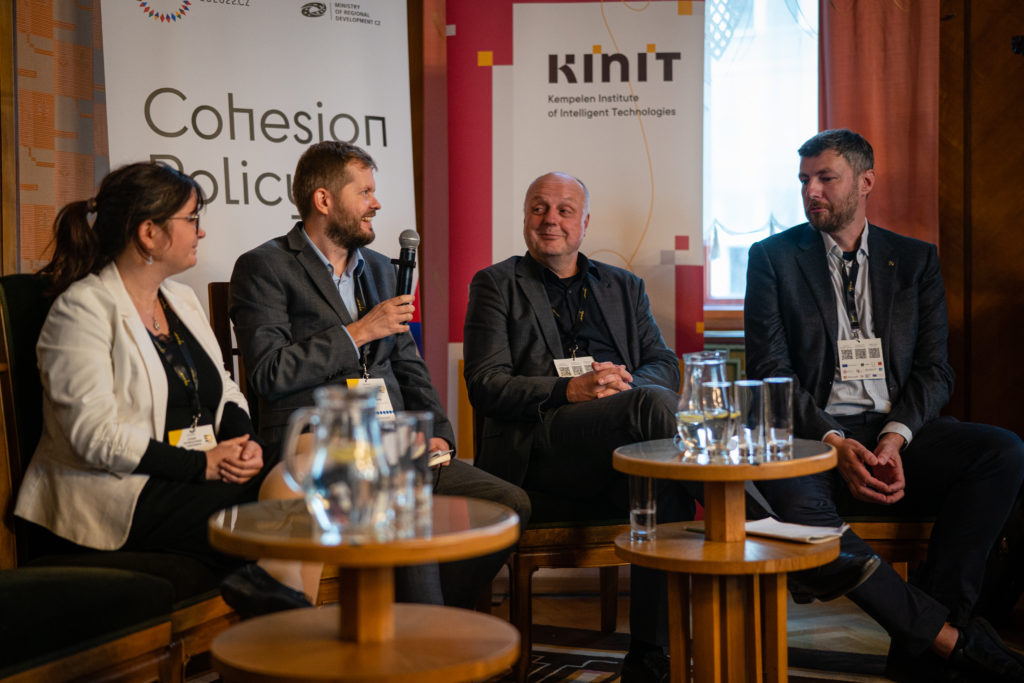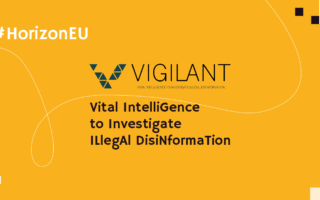What's
Important messages from the CEDMO conference: Europe Tackles Informational Chaos
Thanks to KInIT’s involvement in the Central European Digital Observatory (CEDMO) project, our colleagues Mária Bieliková, Jakub Šimko, Róbert Móro, Ivan Srba and Andrea Hrčková had the opportunity to attend the International Conference Europe Tackles Informational Chaos that took place in Prague 22.9. – 23.9.2022.
Why was it important to attend?
We think that this conference was especially important, because it served as a platform for gathering different experts and key stakeholders – including EU and CEE representatives, NGOs, academics, think tanks, journalists, legislative and technology actors.
These professionals explored a comprehensive range of topics related to disinformation, such as:
These key stakeholders and communities on all levels of society were mobilized in the EDMO platform that “serves to better know the phenomenon and counter disinformation” as Miguel Poires Maduro explained. Surveys and research presented at the conference really shed more light to the shades of disinformation phenomenon in different countries.
What did we learn?
Unfortunately, some of the results of the presented studies were not pleasing. The sociological study of IPSOS was particularly intriguing. It found out that Slovaks are the most susceptible nation to the false anti-Ukraine narratives, especially regarding refugees. Yet, many researchers showed that appropriate measures really can reverse the inclination to disinformation.
Various professionals, including Věrara Jourová, Vice President of the European Commission, see the biggest potential in effective strategic communication. Media with a strong sense of ethics and a strong moral compass are crucial for democracy as well. Jochen Spangenberg emphasized that the media should critically assess information and adopt to tackle media fatigue that the readers feel because of the amount of negativity in the news.
Digital literacy is one of the most important parts of defense against disinformation. It was very reassuring that a lot of speakers presented their successful educational projects. Juliane von Reppert-Bismarck had a good remark that to train young people well, you need to use engaging games. And to train any muscle (brain as well), you need to start with the lighter weights, not with the heaviest ones.
Fact-checking is another essential tool in standing up for the truth, and as Alexander Stubb noted, without basic ground for truth we can’t have democracy. Nevertheless, many professionals agree that fact-checking initiatives cannot stand alone. As Peter Dubóczi observed, fact-checking is moving to geopolitics in order to be effective. According to Tomáš Kriššák, we really have to focus on building strong strategic communication in the region and fact-checking has to be part of it.
Technology and AI panel
KInIT was in charge of the Technology and AI conference panel, where the professionals agreed that technology and AI alone is not the holy grail to tackle disinformation. However, they presented very handy tools to assist fact-checkers, researchers and the government:
- WeVerify
- Truly Media including the popular TruthNest for Twitter monitoring
- Gerulata Juno
These tools extend the reach of the tools provided by the biggest platforms that are also much needed. More tools are being designed as part of the CEDMO project, based on the researched user needs by KInIT.
I especially liked the panel discussion after presentations, where AI experts “sent messages” to non-AI audiences. Brendan Spillane was right when saying that AI is not going to solve disinformation, it will just detect it. Ivan Srba added that we have to set up adequate expectations corresponding to the maturity level of currently available technologies to build trust in AI. Luboš Král explained that those high expectations might come from the misleading term “artificial intelligence”. As he put it, AI is still not intelligent, neither artificial, it is just statistics. Mária Bieliková noted that in order to design artificial intelligence technologies well, we need to understand users and their behavior.

To conclude
Disinformation is a cross-platform, cross-lingual, cross-modal, and cross-border phenomenon, as Kalina Boncheva summed it up. Like never before, we need the cooperation of all involved parties to protect our infosphere. If there will be a need for regulation, it needs to be non-discriminatory, systematic and with the user in mind, as Ľuboš Kukliš (Member of the CEDMO Advisory Board) concluded.


